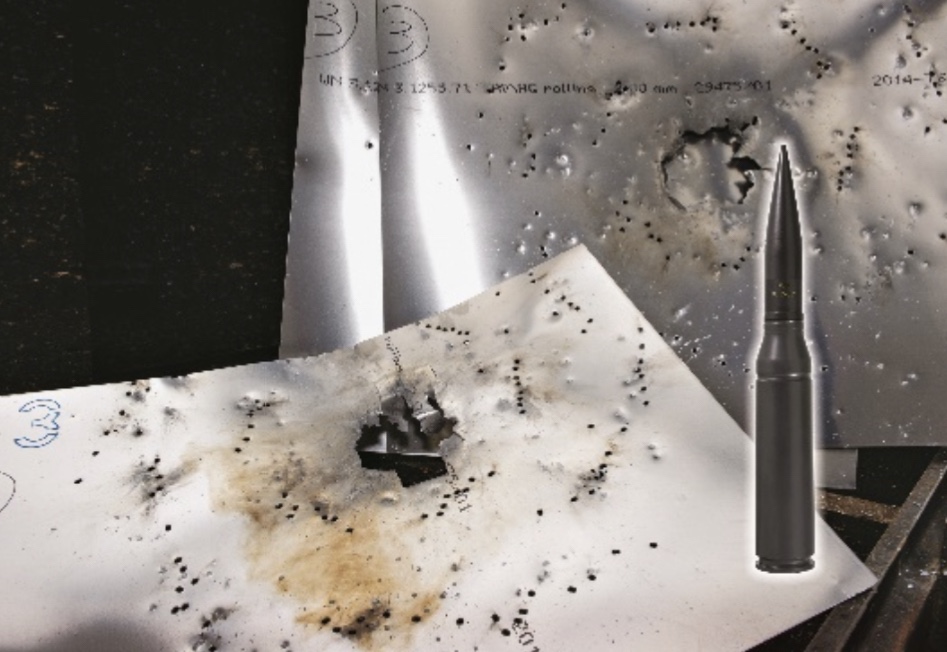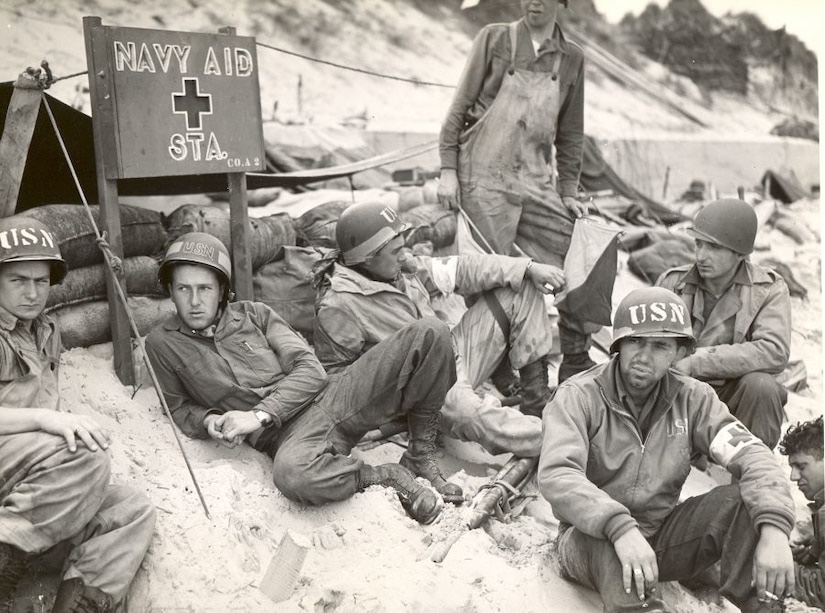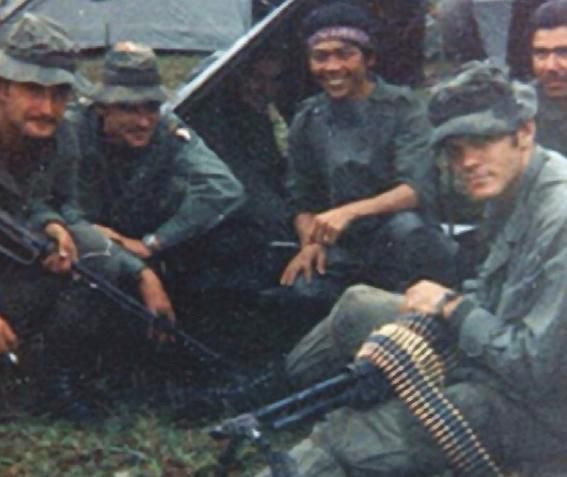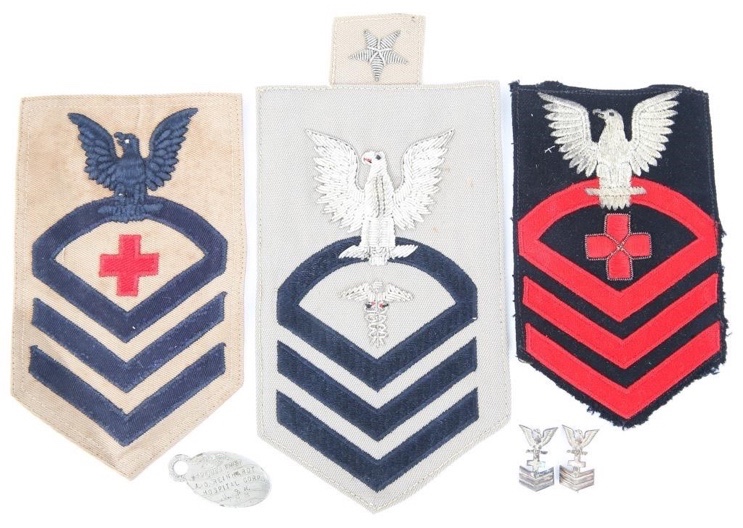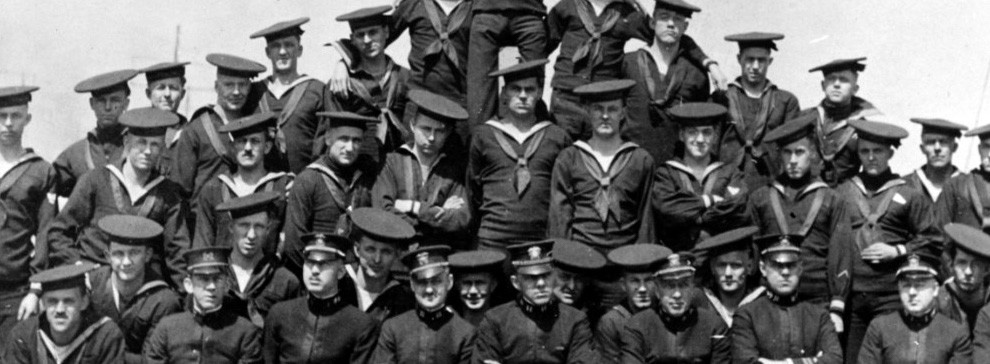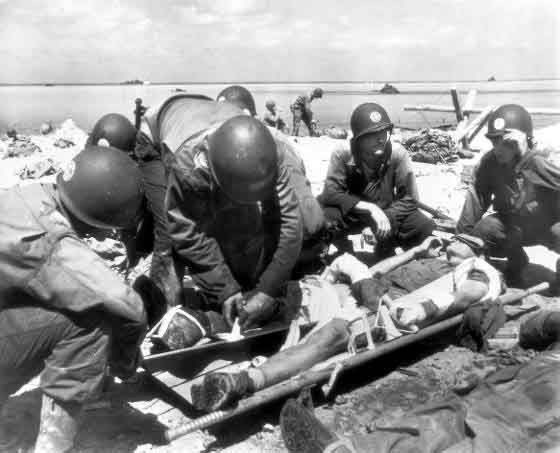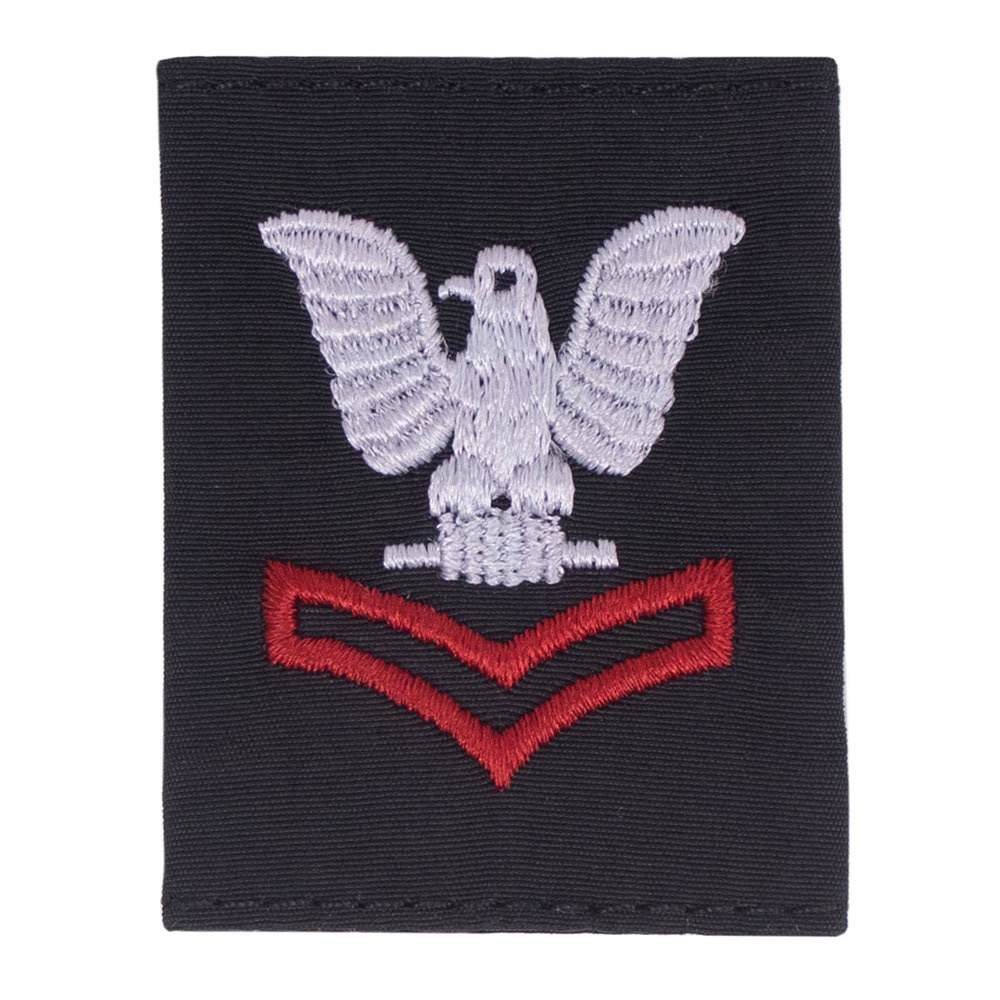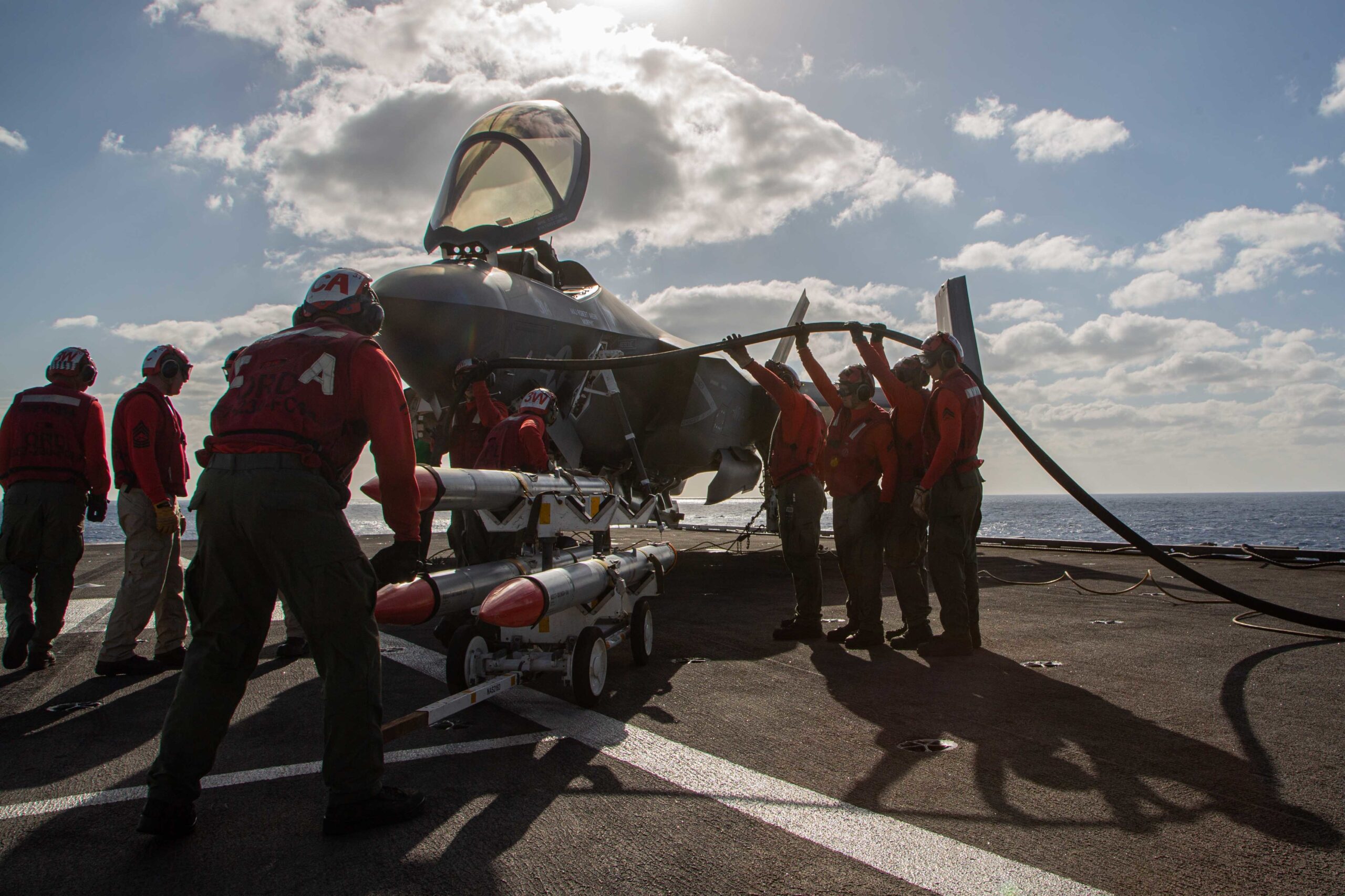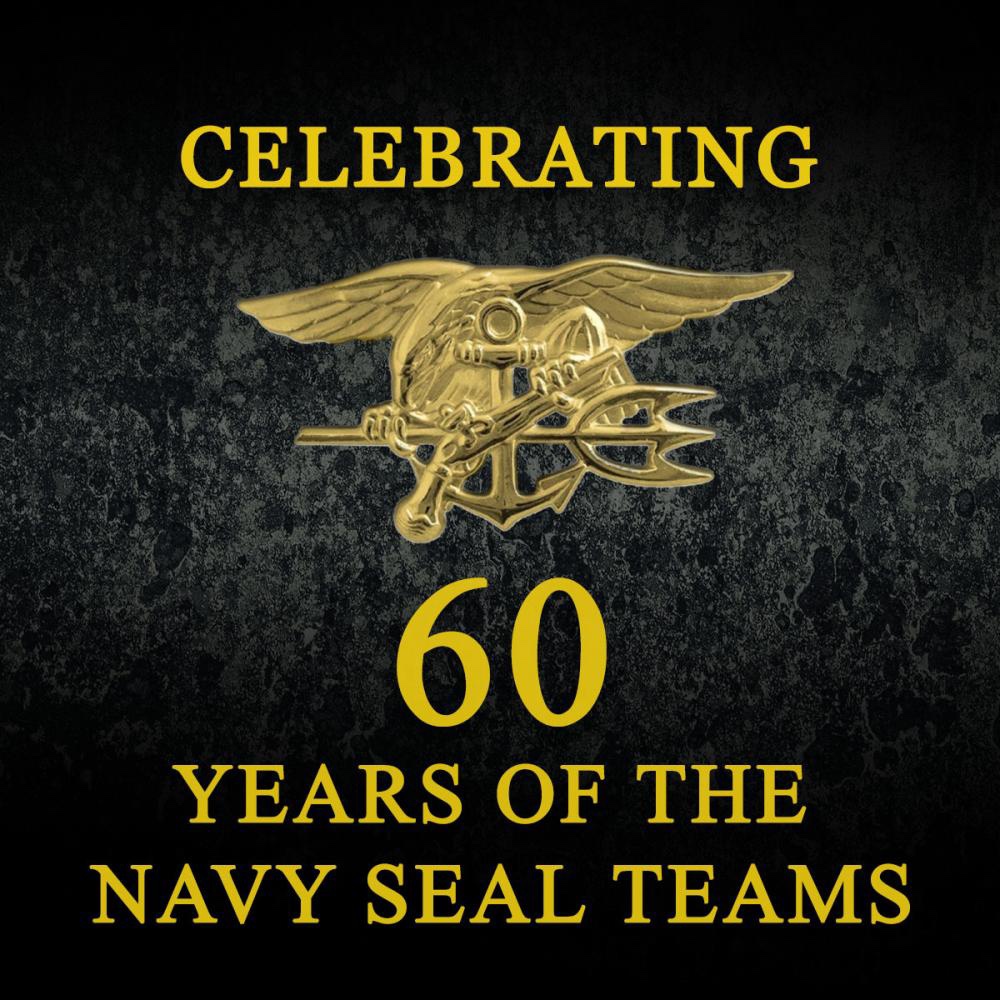NATIONAL HARBOR, Md. – Naval Information Warfare Systems Command (NAVWAR) joined commands from across the information warfare (IW) community to discuss the power of information on the modern battlefield at the Navy’s IW Pavilion during the 2022 Sea-Air-Space Exposition at the Gaylord National Convention Center in National Harbor, Maryland April 4-6.
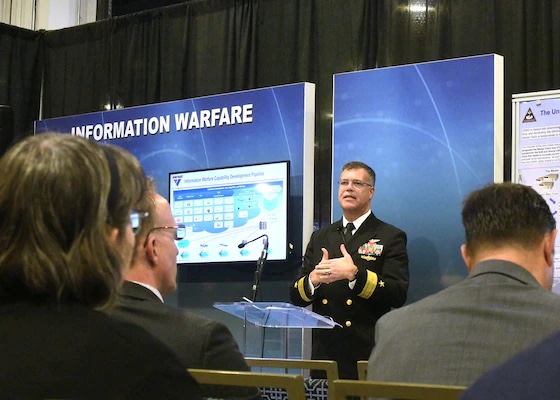
Now in its sixth year at the event, the U.S. Navy IW Pavilion featured a leadership speaker series, an engagement zone and technology demonstrations, with collaboration and alignment at the forefront as a top priority in today’s constantly evolving cyber and technology environments.
During the event, NAVWAR leaders touched on technology challenges, discussing the use of digital engineering, research, development, delivery and sustainment of IW solutions to highlight how the command aims to build a more agile and innovative force that can use information anytime and anywhere by modernizing and better defending information technology (IT) systems.
As a part of the leadership speakers’ series, NAVWAR’s chief engineer, Rear Adm. Eric Ruttenberg, emphasized the need for digital tools and a shift of mindset for their use.
“The future of global maritime superiority is digital and NAVWAR is leading the Navy’s efforts in making that future a reality,” he said. “We have already begun employing world class commercial best practices that deliver faster and more secure information warfare capabilities to the Fleet to ensure the developers, operators, and maintainers have what they need to preserve and extend U.S. maritime leadership not only in today’s operating environment but also in the highly digitized one of the future.”
He went on to explain the process, policy and efficiency efforts that would lead to the end goal of artificial intelligence and machine learning-enabled systems and automated battle management aids for on demand access regardless of the operating setting.
Further, he also addressed the need for a hybrid cloud computing environment to provide the warfighter with any data, at any time, and any place. The advantage to the hybrid cloud concept stems from its integrated and adaptable technology infrastructure comprised of physical data repositories, cloud-based data and applications stored in both public and private clouds, and data applications stored on-premises. Ruttenberg also noted that a hybrid cloud “provides quick access to all necessary data regardless of classification level for ease of cross-domain movement.”
Leaders from Naval Information Warfare Center (NIWC) Atlantic reinforced Ruttenberg’s points as they provided an overview of the command to educate attendees on the main priorities and technical areas of the mission.
“Our NIWC Atlantic team is a unique and critical connection point to the warfighter, in that we research, develop, engineer and deliver technology that brings the full power of information to the fight,” said Capt. Nicole Nigro, NIWC Atlantic commanding officer. “To move at the operational velocity required in this domain, we are intensely focused on leading digital practices that include cybersecurity, automation, model-based systems engineering, DevSecOps, artificial intelligence, machine learning and data analytics – areas that ultimately drive data-informed, human-driven decisions necessary for mission success.”
As it has in previous years, the IW Pavilion featured an engagement zone, where attendees had the opportunity to join Navy leaders, program managers and other subject matter experts for informal, sit-down conversations in multiple sessions throughout the three day conference. These dialogues help to connect government and military leaders with industry partners with the goal of improving and modernizing capabilities for the fleet, as quickly as possible.
“As the Navy’s systems command for a warfighting domain that can change in a matter of minutes, it’s critical to give our industry partners clear direction on where we are going, what our needs are, and why,” said NAVWAR Executive Director John Pope. “It’s been extremely beneficial to connect with industry partners, no matter how big or how small, so they can understand how they can contribute to the larger Navy capability picture.”
The IW Pavilion also featured several technology demonstrations that impact Sailors today, including Program Executive Office Manpower, Logistics and Business Solutions’ (PEO MLB) MyNavy Human Resources (HR) IT Solutions, unmanned underwater vehicles from Naval Meteorology and Oceanography Command, the Joint Communications Marketplace from the Joint Tactical Networking Center and the U.S. Naval Observatory’s atomic clock.
“MyNavy HR IT Solutions creates and maintains mobile apps that allow Sailors to accelerate and manage their careers through digital solutions,” said Christine Rodriguez, program executive officer of PEO MLB. “Attendees got to experience live, interactive demos of the mobile apps we have developed for the Navy and learned how to get an app added to the Navy App Locker, home to the Navy’s official apps that touch the lives of every Sailor in the Fleet.”
MyNavy HR IT Solutions is one of PEO MLB’s service portfolios, serving as the single IT acquisition agent providing life cycle management supporting the Navy’s human resources IT capabilities.
Hosted by the Navy League of the United States, the Sea-Air-Space Exposition is now the largest maritime exposition in the United States and continues as an invaluable extension of the Navy League’s mission of maritime policy, education and sea service support.
From Kara McDermott


